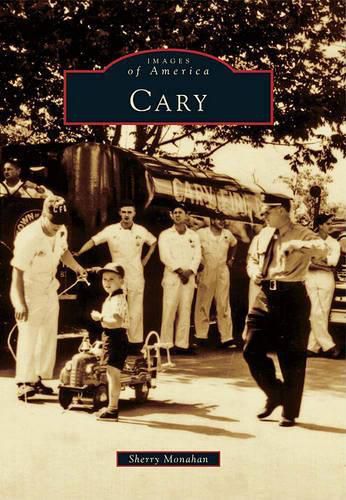Readings Newsletter
Become a Readings Member to make your shopping experience even easier.
Sign in or sign up for free!
You’re not far away from qualifying for FREE standard shipping within Australia
You’ve qualified for FREE standard shipping within Australia
The cart is loading…






While a few people called the area we know as Cary home in the 1700s, it was not until 1854 that signs of a village began to appear. The enterprising businessman Allison Francis Frank Page bought 300 acres on which he operated a sawmill and did some farming. The railroad soon reached Cary, and in 1868, Frank saw the opportunity to start a new venture and built a hotel, which served meals and provided accommodations to train passengers. Cary was incorporated in 1871. By 1880, there were nearly 300 residents, and by 1930, that number had tripled. The timber industry kept Cary alive, as well as cotton gins and other manufacturing businesses. Cary had a private boarding school by 1870, and in 1907, it became the first publicly funded school and attracted students from around the state. Doctors, lawyers, merchants, churches, and many other businesses sprang up. However, it was the creation of Research Triangle Park that caused Cary’s explosive growth.
$9.00 standard shipping within Australia
FREE standard shipping within Australia for orders over $100.00
Express & International shipping calculated at checkout
While a few people called the area we know as Cary home in the 1700s, it was not until 1854 that signs of a village began to appear. The enterprising businessman Allison Francis Frank Page bought 300 acres on which he operated a sawmill and did some farming. The railroad soon reached Cary, and in 1868, Frank saw the opportunity to start a new venture and built a hotel, which served meals and provided accommodations to train passengers. Cary was incorporated in 1871. By 1880, there were nearly 300 residents, and by 1930, that number had tripled. The timber industry kept Cary alive, as well as cotton gins and other manufacturing businesses. Cary had a private boarding school by 1870, and in 1907, it became the first publicly funded school and attracted students from around the state. Doctors, lawyers, merchants, churches, and many other businesses sprang up. However, it was the creation of Research Triangle Park that caused Cary’s explosive growth.